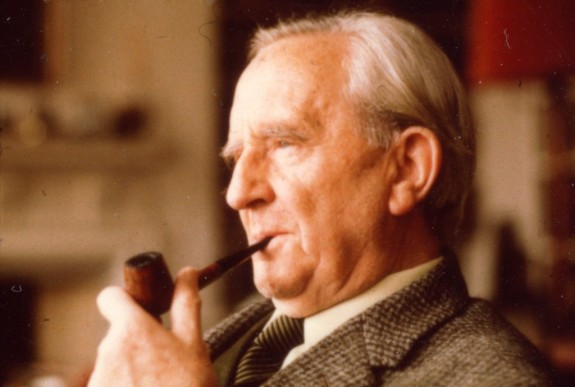Few people know J.R.R. Tolkien better than Joseph Pearce. The renowned literary biographer has studied Tolkien for decades and has written many books on his fellow Englishman.
He has also also taught two eight-lecture courses on Tolkien’s work for the Catholic Courses program, one on The Lord of the Rings and the other on The Hobbit. He also has two Tolkien specials airing later this year on EWTN.
Pearce will be the first to tell you that to understand Tolkien, you have to understand his Catholicism. After all, Tolkien described his Lord of the Rings trilogy as “a fundamentally religious and Catholic work.”
(The descriptions below are either from the publisher or from Amazon.)
The Philosophy of Tolkien: The Worldview Behind The Lord of the Rings
by Peter Kreeft
Ignatius Press, 237 pages, paperback
Released on October 1, 2005
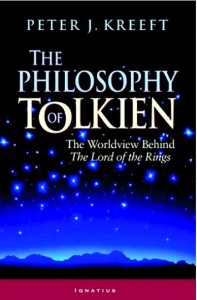 While nothing can equal or replace the adventure in reading Tolkien’s masterwork, The Lord of the Rings, Peter Kreeft says that the journey into its underlying philosophy can be another exhilarating adventure. Thus, Kreeft takes the reader on a voyage of discovery into the philosophical bones of Middle earth. He organizes the philosophical themes in The Lord of the Rings into 50 categories, accompanied by over 1,000 references to the text of Tolkien’s book.
While nothing can equal or replace the adventure in reading Tolkien’s masterwork, The Lord of the Rings, Peter Kreeft says that the journey into its underlying philosophy can be another exhilarating adventure. Thus, Kreeft takes the reader on a voyage of discovery into the philosophical bones of Middle earth. He organizes the philosophical themes in The Lord of the Rings into 50 categories, accompanied by over 1,000 references to the text of Tolkien’s book.
Since many of the great questions of philosophy are included in the 50-theme outline, this book can also be read as an engaging introduction to philosophy. For each of the philosophical topics in The Lord of the Rings, Kreeft presents tools by which they can be understood.
Tolkien: Man and Myth, a Literary Life
by Joseph Pearce
Ignatius Press, 242 pages, paperback
Released on December 1, 2001
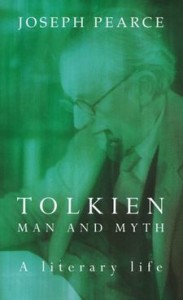 J.R.R. Tolkien’s The Lord of the Rings took first place in a recent nationwide British poll to find the greatest book of the century. He may be the most popular writer of our age, but Tolkien is often misunderstood. This major new study of his life, his character and his work reveals the facts and confronts the myths. It explores the background to the man and the culture in which he wrote.
J.R.R. Tolkien’s The Lord of the Rings took first place in a recent nationwide British poll to find the greatest book of the century. He may be the most popular writer of our age, but Tolkien is often misunderstood. This major new study of his life, his character and his work reveals the facts and confronts the myths. It explores the background to the man and the culture in which he wrote.
Tolkien: Man and Myth observes the relationships that the master writer had with his closest literary colleagues. It reveals his unique relationship with C.S. Lewis, the writer of the Narnia books, and the roots of their estrangement.
In this original book about a leading literary life, Joseph Pearce enters the world created by Tolkien in the seven books published during his lifetime. He explores the significance of Middle Earth and what it represented in Tolkien’s thinking. Myth, to him, was not a leap from reality but a leap into reality.
Bilbo’s Journey: Discovering the Hidden Meaning of The Hobbit
by Joseph Pearce
Saint Benedict Press, 120 pages, paperback
Released on October 31, 2012
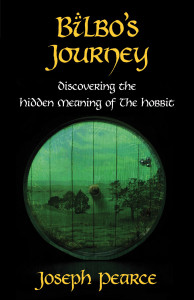 In Bilbo’s Journey go beyond the dragons, dwarves, and elves, and discover the surprisingly deep meaning of J.R.R. Tolkien’s classic novel The Hobbit.
In Bilbo’s Journey go beyond the dragons, dwarves, and elves, and discover the surprisingly deep meaning of J.R.R. Tolkien’s classic novel The Hobbit.
Bilbo’s quest to find and slay the dragon Smaug is a riveting tale of daring and heroism, but as renowned Tolkien scholar Joseph Pearce shows, it is not simply Bilbo’s journey, it is our journey too.
It is the Christian journey of self-sacrifice out of love for others, and abandonment to providence and grace.
In Bilbo’s Journey: Discovering the Hidden Meaning of The Hobbit you will relive the excitement of Tolkien’s classic tale, while discovering the profound Christian meaning that makes The Hobbit a truly timeless adventure.
Tolkien: A Celebration
edited by Joseph Pearce
Ignatius Press, 210 pages, paperback
Released on November 1, 2001
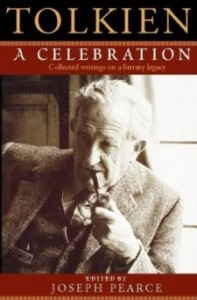 Tolkien: A Celebration begins and ends with two writers—George Sayer and Walter Hooper—who knew J.R.R. Tolkien well, offering a rare insight into the man behind the myth. Between these delightful memoirs are twelve essays that explore the threads of inspiration and purpose in his major works—The Lord of the Rings, the Silmarillion, and The Hobbit.
Tolkien: A Celebration begins and ends with two writers—George Sayer and Walter Hooper—who knew J.R.R. Tolkien well, offering a rare insight into the man behind the myth. Between these delightful memoirs are twelve essays that explore the threads of inspiration and purpose in his major works—The Lord of the Rings, the Silmarillion, and The Hobbit.
The works are examined theologically, philosophically, culturally, ecologically, mystically, and historically, as the various contributors seek to understand the profundity of Tolkien¹s achievement. Above all, these collected essays reveal a writer of inspired creativity and profound spiritual depth.
J. R. R. Tolkien’s Sanctifying Myth: Understanding Middle-earth
by Bradley J. Birzer
Intercollegiate Studies Institute, 255 pages, paperback
Released on November 1, 2002
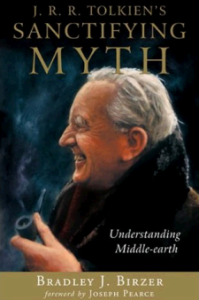 Peter Jackson’s film version of the Lord of the Rings trilogy, and the accompanying proliferation of Rings-related paraphernalia, has once again brought the work of J. R. R. Tolkien to a popular audience. There are, however, few full and accessible treatments of the religious vision permeating Tolkien’s influential works. Bradley Birzer has remedied that with his fresh study, J. R. R. Tolkien’s Sanctifying Myth: Understanding Middle-earth.
Peter Jackson’s film version of the Lord of the Rings trilogy, and the accompanying proliferation of Rings-related paraphernalia, has once again brought the work of J. R. R. Tolkien to a popular audience. There are, however, few full and accessible treatments of the religious vision permeating Tolkien’s influential works. Bradley Birzer has remedied that with his fresh study, J. R. R. Tolkien’s Sanctifying Myth: Understanding Middle-earth.
In it, Birzer explicates the religious symbolism and significance of Tolkien’s Middle-earth stories. More broadly, Birzer situates Tolkien within the Christian humanist tradition represented by Thomas More and T. S. Eliot, Dante and C. S. Lewis. He argues that through the genre of myth Tolkien is able to provide a sophisticated—and appealing—social and ethical worldview.
The Ring and the Cross: Christianity and The Lord of the Rings
edited by Paul E. Kerry
Fairleigh Dickinson University Press, 310 pages, hardcover
Released on December 10, 2010
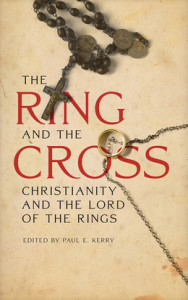 The conversation, sometimes heated, about the influence of Christianity on the writings of J.R.R. Tolkien has a long history. What has been lacking is a forum for a civilized discussion about the topic, as well as a chronological overview of the major arguments and themes that have engaged scholars about the impact of Christianity on Tolkien’s oeuvre, with particular reference to The Lord of the Rings.
The conversation, sometimes heated, about the influence of Christianity on the writings of J.R.R. Tolkien has a long history. What has been lacking is a forum for a civilized discussion about the topic, as well as a chronological overview of the major arguments and themes that have engaged scholars about the impact of Christianity on Tolkien’s oeuvre, with particular reference to The Lord of the Rings.
The Ring and the Cross addresses these two needs through an articulate and authoritative analyses of Tolkien’s Roman Catholicism and the role it plays in understanding his writings. The volume’s contributors deftly explain the kinds of interpretations put forward and evidence marshaled when arguing for or against religious influence. The Ring and the Cross invites readers to draw their own conclusions about a subject that has fascinated Tolkien enthusiasts since the publication of his masterpiece, The Lord of the Rings.
The Gospel According to Tolkien
by Ralph C. Wood
Westminster John Knox Press, 224 pages, paperback
Released on October 21, 2003
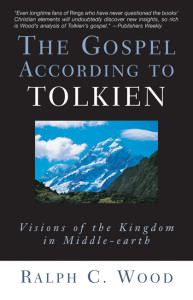 Readers and fans of J.R.R. Tolkien have long been aware of the Christian underpinnings of The Lord of the Rings trilogy. Still, Tolkien has not been without his religious critics, including those who have read a fascination with paganism into the pre-Christian world of Tolkien’s creation. Wood, a professor of theology and literature at Baylor University, responds to those critics with an academically sound retort of “Nonsense!”
Readers and fans of J.R.R. Tolkien have long been aware of the Christian underpinnings of The Lord of the Rings trilogy. Still, Tolkien has not been without his religious critics, including those who have read a fascination with paganism into the pre-Christian world of Tolkien’s creation. Wood, a professor of theology and literature at Baylor University, responds to those critics with an academically sound retort of “Nonsense!”
Acknowledging straight off that Rings is devoid of any traces of “formal religion,” Wood offers countless pieces of evidence that support his analysis of the full-fledged, deeply Christian theology of the mythological culture of Middle-earth. And he does so convincingly. Even longtime fans of Rings who have never questioned the books’ Christian elements will undoubtedly discover new insights, so rich is Wood’s analysis of Tolkien’s gospel.
But be forewarned: This is not a book for the casual reader. Rather, it is a somewhat scholarly endeavor for those who want a more thorough understanding of the underlying themes that have made The Lord of the Rings novels, as well as Tolkien’s other writings, such enduring treasures. Wood teases out those themes-life and death, good and evil, courage and cowardice, mercy and justice and of course, faith, hope, and love-to reveal the faith-filled nature of Tolkien’s theocentric and sacramental, albeit fictional, world.
(From Publisher’s Weekly review.)
The Power of the Ring: The Spiritual Vision Behind the Lord of the Rings and The Hobbit
by Stratford Caldecott
Crossroad Publishing, 256 pages, paperback
Released on December 4, 2012
(Originally published as “Secret Fire: The Spiritual Vision of J.R.R. Tolkien”.)
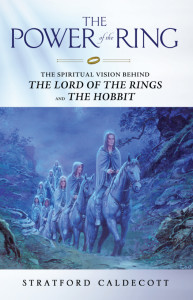 Digging deep into J. R. R. Tolkien’s spiritual biography—his religious scholarship and his love of both Christian and pagan myth—Stratford Caldecott offers a critical study of how the acclaimed author effectively created a vivid Middle Earth using the familiar rites and ceremonies of human history. And while readers and moviegoers alike may appreciate the fantasy world of The Hobbit and the Lord of the Rings trilogy, few know that in life, Tolkien was a devout Roman Catholic and that the characters, the events, and the general morality of each novel are informed by the dogmas of his faith.
Digging deep into J. R. R. Tolkien’s spiritual biography—his religious scholarship and his love of both Christian and pagan myth—Stratford Caldecott offers a critical study of how the acclaimed author effectively created a vivid Middle Earth using the familiar rites and ceremonies of human history. And while readers and moviegoers alike may appreciate the fantasy world of The Hobbit and the Lord of the Rings trilogy, few know that in life, Tolkien was a devout Roman Catholic and that the characters, the events, and the general morality of each novel are informed by the dogmas of his faith.
Revised and updated, this acclaimed study of Tolkien’s achievement includes commentary on Peter Jackson’s film adaptations and explores many of the fascinating stories and letters published after Tolkien’s death.
What are your favorite Tolkien books?

